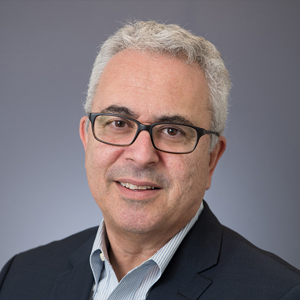With college enrollment tumbling, new strategies are urgently needed
U.S. college enrollments have declined by 3 million students over the past decade. While the decrease has been concentrated in community colleges, it’s coming soon to many four-year institutions.
Demographers predict an “enrollment cliff” beginning in 2025, when the traditional college-age population will start shrinking for the foreseeable future.
Unless they bring in more students, colleges will struggle financially, and some could shut their doors. Some are already doing so. The result: Fewer Americans will have the skills needed to strengthen our democracy, advance our knowledge-based economy and solve the challenges of our time — from climate change to life-threatening diseases to racial inequities.
To reverse enrollment trends, colleges must do more than compete for the dwindling number of graduating high school seniors. They need new strategies to attract populations they have long undervalued and underserved: high-school students taking college courses, community-college transfers and working adults.
Here are ways colleges can develop the talents of these three groups.
High school students
The number of high school students taking Advanced Placement courses has surged, increasing by 57% over the last decade, with even faster growth in the number of high schoolers taking college courses, mostly at community colleges. But too few of these dual-enrollment courses count toward a college degree; that’s a lost opportunity to make college more affordable for working-class students and families.
Colleges can bolster enrollments by better serving these dual-enrollment students. A great example: The Alamo Colleges District, a 90,000-student system in San Antonio, Texas, works with K-12 partners to advise thousands of diverse high schoolers to enroll in not just any college courses, but those aligned with valuable credentials.
Alamo has developed clear course sequences that advisers use to guide high school students to associate degree pathways that lead directly to good jobs or seamless transfers into bachelor’s degree programs at one of seven nearby universities. In this way, Alamo is translating growing interest in college-level work into what families care about most — setting students on a path to the bright future that comes with a high-quality degree.
Community-college transfers
The vast majority of community college students want a bachelor’s degree, but only about one in every six accomplishes that goal within six years of community college entry. Those derailed most often are Black and Hispanic students, as well as students from low-income neighborhoods, who are more likely than others to begin higher education at a community college.
To grow enrollments, universities and community colleges should stop competing against one another for students and compete together to substantially increase the likelihood that students will in fact obtain a bachelor’s degree. One excellent example: a partnership between Northern Virginia Community College (NOVA) and George Mason University. By enrolling new students at both institutions simultaneously, this large community college and top research university report that they are helping 3,000 students each year get on the path to a low-cost, high-quality bachelor’s degree — the most certain route to a well-paying job in northern Virginia.
Unlike most community college students, those enrolled in this program do not need to apply twice, or wonder if credits will transfer or sort through conflicting information from two financial aid offices.

Adults needing high-quality short-term training
Postsecondary education could help millions of adults move out of jobs that don’t pay family-sustaining wages. But they need salary increases much more quickly than the two years it takes to earn an associate degree, let alone the four years needed for a bachelor’s.
Unfortunately, research shows that many shorter-term credentials do not significantly increase salaries, and don’t lead to paths out of low-wage work.
Colleges across the country can sustainably attract more students by ensuring that their short-term certificates actually lead to better-paying jobs with benefits. They can learn from Valencia College in Orlando, Florida, whose president reports that every year they deliver accelerated skills training to nearly 1,000 adults in construction, advanced manufacturing, information technology and other fields.In programs that last four to 22 weeks, students earn industry-recognized credentials that lead to substantially higher salaries as well as access to additional training to improve their job prospects.
What lessons can educators learn from these examples? From 2010 to 2019, enrollments dropped 25% at community colleges nationwide, but held steady at NOVA and increased by 15% at Valencia and 20% at the Alamo Colleges District.
And while enrollments increased by just 20% at public four-year colleges in that decade, they rose nearly 50% at George Mason.
These stories demonstrate that new students will show up when they see campuses committed to delivering what they want and need. Enrollments will sustainably increase if college leaders develop new models that provide value to nontraditional populations.
By following these examples, other colleges and universities can reinvigorate themselves while creating opportunities for coming generations to bolster the country’s economy, democracy and capacity to solve pressing problems.
This story was produced by The Hechinger Report, a nonprofit, independent news organization focused on inequality and innovation in education. It was republished under a noncommercial Creative Common license.
Enjoy reading ASBMB Today?
Become a member to receive the print edition four times a year and the digital edition monthly.
Learn moreGet the latest from ASBMB Today
Enter your email address, and we’ll send you a weekly email with recent articles, interviews and more.
Latest in Opinions
Opinions highlights or most popular articles

How pediatric cataracts shaped my scientific journey
Undergraduate student Grace Jones shares how she transformed her childhood cataract diagnosis into a scientific purpose. She explores how biochemistry can bring a clearer vision to others, and how personal history can shape discovery.

Debugging my code and teaching with ChatGPT
AI tools like ChatGPT have changed the way an assistant professor teaches and does research. But, he asserts that real growth still comes from struggle, and educators must help students use AI wisely — as scaffolds, not shortcuts.

AI in the lab: The power of smarter questions
An assistant professor discusses AI's evolution from a buzzword to a trusted research partner. It helps streamline reviews, troubleshoot code, save time and spark ideas, but its success relies on combining AI with expertise and critical thinking.

How AlphaFold transformed my classroom into a research lab
A high school science teacher reflects on how AI-integrated technologies help her students ponder realistic research questions with hands-on learning.

Writing with AI turns chaos into clarity
Associate professor shares how generative AI, used as a creative whiteboard, helps scientists refine ideas, structure complexity and sharpen clarity — transforming the messy process of discovery into compelling science writing.

Teaching AI to listen
A computational medicine graduate student reflects on building natural language processing tools that extract meaning from messy clinical notes — transforming how we identify genetic risk while redefining what it means to listen in science.

